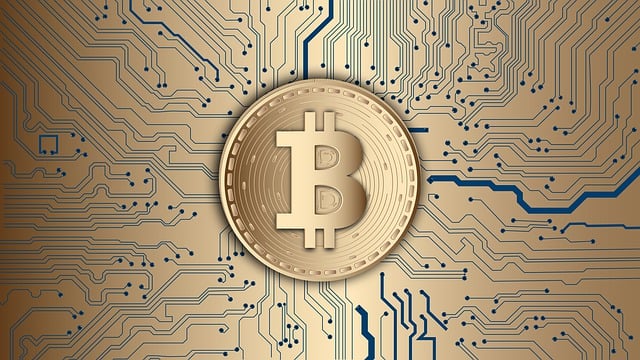Decentralized Finance (DeFi) platforms, leveraging blockchain technology, revolutionize peer-to-peer lending by removing intermediaries. However, their global, decentralized nature poses regulatory hurdles for governments worldwide in areas like consumer protection, money laundering, and tax evasion. Balancing DeFi's transparency and accessibility with robust regulation is crucial for its long-term stability. Overcoming these challenges requires collaboration between developers, regulators, and stakeholders, along with technological advancements to address security risks, maintain market integrity, and ensure public trust.
“Discover the revolutionary world of decentralized finance (DeFi) lending platforms, transforming global financial services in the digital age. This article explores the burgeoning DeFi landscape, highlighting its benefits and rapid growth. We delve into the intricate details of how these platforms function, focusing on key considerations for users. Moreover, it examines regulatory challenges, particularly those surrounding oversight and security, offering insights into potential solutions to ensure the sustainable development of this emerging financial paradigm.”
- Understanding Decentralized Finance (DeFi) Lending Platforms
- Benefits and Growth of DeFi Lending in the Digital Age
- Regulatory Landscape: Challenges Facing DeFi Lending
- Key Considerations for Users Engaging with DeFi Lending Platforms
- The Future of DeFi Lending: Potential Solutions to Regulatory Concerns
Understanding Decentralized Finance (DeFi) Lending Platforms

Decentralized Finance (DeFi) lending platforms are revolutionary, offering a peer-to-peer borrowing and lending model built on blockchain technology. Unlike traditional financial institutions, these platforms eliminate intermediaries, providing users with greater control over their funds. DeFi allows anyone with an internet connection to access financial services, including lending and borrowing, without the need for a bank or credit check. This democratization of finance has attracted a significant user base, eager to participate in this innovative ecosystem.
However, as DeFi continues to grow, regulatory challenges emerge. The decentralized nature of these platforms makes it difficult for traditional financial regulators to oversee them effectively. Concerns about consumer protection, money laundering, and tax evasion have prompted governments worldwide to seek clearer guidelines for governing DeFi activities. Balancing the benefits of DeFi’s transparency and accessibility with robust regulation is an ongoing debate, as stakeholders strive to ensure a sustainable and secure future for this evolving sector.
Benefits and Growth of DeFi Lending in the Digital Age

In the digital age, decentralized finance (DeFi) lending platforms have emerged as a disruptive force, transforming traditional financial systems. DeFi offers numerous benefits to users by eliminating intermediaries and providing greater access to credit. This innovative approach allows individuals to borrow and lend directly from one another, fostering a more inclusive financial ecosystem. With its transparent and secure nature, based on blockchain technology, DeFi lending has gained significant traction among tech-savvy users. The growth of this sector is evident in the increasing number of platforms and the rising volume of transactions, attracting both borrowers and lenders with promising returns.
However, as DeFi continues to evolve and gain mainstream adoption, regulatory challenges become increasingly prominent. As decentralized systems operate outside traditional financial regulations, they face scrutiny regarding consumer protection, money laundering, and tax compliance. Navigating these complex issues is crucial for the long-term sustainability of DeFi lending. Striking a balance between maintaining the industry’s inherent benefits—such as reduced fees and increased accessibility—and adhering to necessary regulatory frameworks will be key to its continued growth in a rapidly changing financial landscape.
Regulatory Landscape: Challenges Facing DeFi Lending

The decentralized nature of DeFi lending platforms presents unique regulatory challenges. Since DeFi operates outside traditional financial systems, it has been difficult for regulators to apply existing laws and policies effectively. This lack of clarity creates a complex environment where platform developers must navigate evolving legal frameworks while maintaining the integrity and security of their services.
One significant challenge is the global reach of DeFi, which transcends national boundaries. Regulatory bodies in different countries have varying approaches and interpretations of financial regulations, making it challenging to establish consistent standards for DeFi lending. Additionally, the anonymity often associated with blockchain technology complicates efforts to enforce consumer protection measures and combat money laundering. As DeFi continues to gain traction, addressing these regulatory challenges will be crucial to ensuring its sustainability and public trust.
Key Considerations for Users Engaging with DeFi Lending Platforms

When engaging with decentralized finance (DeFi) lending platforms, users must be cognizant of several key considerations given the unique landscape and regulatory challenges of this space. One of the primary concerns is security, as DeFi platforms are often targets for hackers due to their smart contract-based architecture. Users should thoroughly vet platform security measures, audit reports, and development teams to mitigate risks associated with potential exploits or vulnerabilities.
Additionally, understanding the complexities of underlying blockchain technology and smart contracts is crucial. Unlike traditional financial institutions, DeFi platforms operate transparently on a public ledger, but this transparency also means users must carefully review code and terms of service to grasp the full implications of their interactions, including potential risks related to liquidity, price volatility, and unforeseen consequences from smart contract logic.
The Future of DeFi Lending: Potential Solutions to Regulatory Concerns

The future of decentralized finance (DeFi) lending platforms hinges on navigating regulatory challenges, which have emerged as a significant hurdle for this innovative sector. As DeFi continues to gain traction, regulators worldwide are grappling with how to oversee these peer-to-peer financial systems effectively while preserving their core principles of decentralization and transparency. One potential solution lies in collaboration between developers, regulators, and industry stakeholders. By engaging in open dialogue, they can work together to design robust risk management frameworks that address concerns related to consumer protection, market integrity, and money laundering.
Technological advancements, such as enhanced blockchain privacy solutions and improved smart contract auditing, can also play a pivotal role in calming regulatory fears. For instance, developing more secure and auditable lending protocols can instill confidence in DeFi’s ability to mitigate risks effectively. Moreover, creating centralized points of contact or oversight mechanisms within decentralized systems could bridge the gap between traditional finance and DeFi while preserving the benefits of decentralization.
Decentralized finance (DeFi) lending platforms have disrupted traditional financial systems, offering innovative solutions in the digital age. Despite their numerous benefits, such as enhanced accessibility and transparency, DeFi lending faces significant regulatory challenges. As the industry matures, addressing these issues through collaboration between developers, regulators, and users is crucial to ensure a robust and secure future for DeFi. By understanding both the opportunities and obstacles, we can navigate the evolving landscape of decentralized finance and its regulatory concerns.
